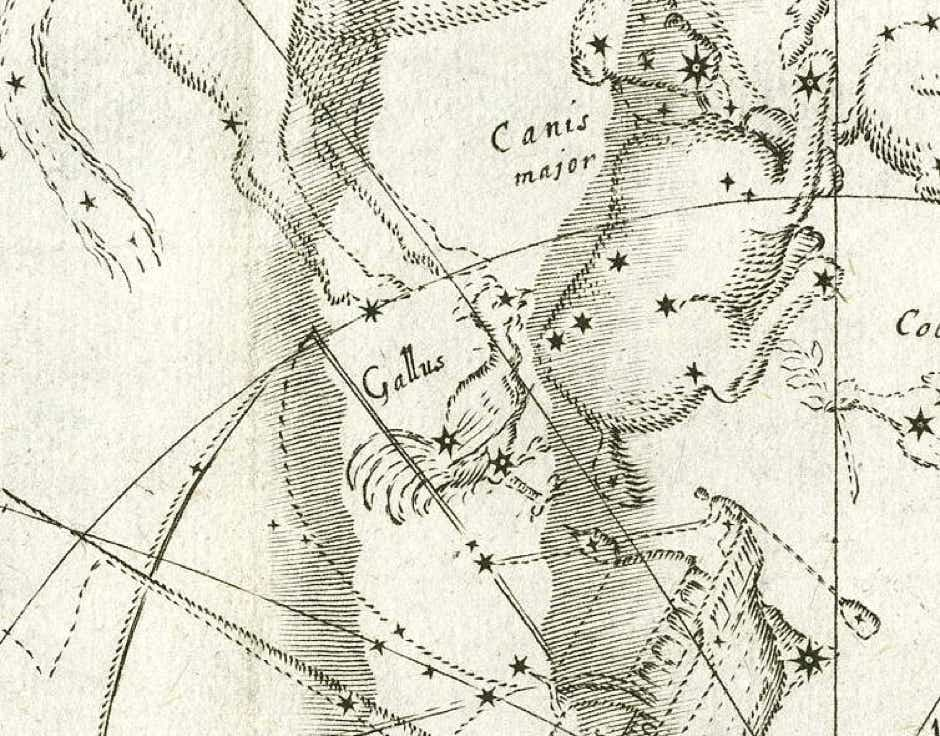
This constellation was formed by the Dutch theologian Petrus Plancius and first appeared on his celestial globe of 1612. It lay in the Milky Way south of the celestial equator in the northern part of what is now Puppis.
Gallus made its first appearance in print twelve years later on a chart by the German astronomer Jacob Bartsch in his book Usus Astronomicus Planisphaerii Stellati (1624). Bartsch, who was keen to find Biblical references for constellations, said in the accompanying text that Gallus represented the cockerel that crowed after Peter had denied Jesus thrice. Whether this was actually Plancius’s intention we cannot tell, for Plancius left no surviving records. What’s more, Bartsch did not even know that Plancius was the inventor. He first saw Gallus on a globe of 1621 made by his countryman Isaac Habrecht (1589–1633) and mistakenly attributed it to him. Habrecht presented his own version of Gallus on a printed chart in his book Planiglobium Coeleste, et Terrestre published in 1628 (see illustration below).
Gallus was awkwardly placed in an area that was already occupied by the stern of Argo Navis and so was superfluous. Later astronomers such as Johannes Hevelius returned its stars to Argo and it was soon forgotten.
Gallus consisted of a few stars beneath the feet of Monoceros and behind the rump of Canis Major, as seen on this chart from the 1666 edition of Isaac Habrecht’s Planiglobium Coeleste et Terrestre. (Image courtesy ECHO, Berlin.)
© Ian Ridpath. All rights reserved
The tail of Gallus, next to the sails of Argo Navis, seen on a gore for the 1612 celestial globe by Petrus Plancius and the Dutch engraver and cartographer Pieter van den Keere (Petrus Kaerius) (1571–c.1646). Here it is given the alternative name Alector, the Greek for cockerel or rooster. Being on a globe, the constellations are drawn in reverse from the way they appear in the sky.
Jacob Bartsch’s description of Gallus from his book Usus Astronomicus Planisphaerii Stellati of 1624.





